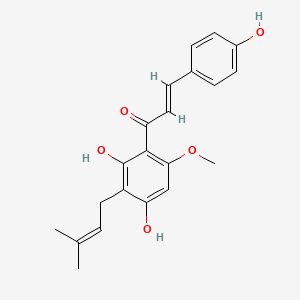
|
Xanthohumol |
Xanthohumol is a lipid of Polyketides (PK) class. Xanthohumol is associated with abnormalities such as Endometriosis, site unspecified, Cyst, peritoneal lesion, Proliferative inflammation and furuncle. The involved functions are known as Cell Proliferation, Signal Transduction, Pathologic Neovascularization, Adverse effects and Proliferation (morphologic abnormality). Xanthohumol often locates in peritoneal, Mesentery, Membrane, Tissue specimen from uterus and Cell Nucleus. The associated genes with Xanthohumol are PI3 gene, KEAP1 gene, SLC33A1 gene, BCR-ABL Fusion Gene and BIRC5 gene. The related lipids are Fatty Acids and Palmitates. The related experimental models are Knock-out. |
465 |
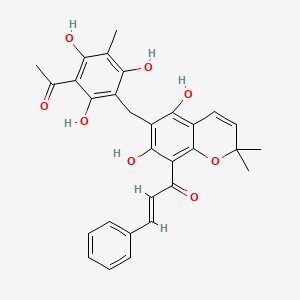
|
rottlerin |
Rottlerin is a lipid of Polyketides (PK) class. Rottlerin is associated with abnormalities such as PARAGANGLIOMAS 2, Hyperostosis, Diffuse Idiopathic Skeletal, Virus Diseases, Perisylvian syndrome and Autoimmune disease (systemic) NOS. The involved functions are known as Apoptosis, Regulation, Signal Transduction, inhibitors and Proteasome Inhibitors [MoA]. Rottlerin often locates in Clone, Membrane, Body tissue, Plasma membrane and soluble. The associated genes with Rottlerin are XIAP gene, GAPDH gene, ICAM1 gene, P4HTM gene and TNFSF10 gene. The related lipids are Promega, Fatty Acids, Sphingolipids, Lipopolysaccharides and Saponin. The related experimental models are Mouse Model, Xenograft Model and Cancer Model. |
1198 |
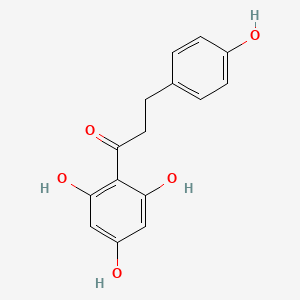
|
phloretin |
phloretin is a lipid of Polyketides (PK) class. Phloretin is associated with abnormalities such as Atherosclerosis, Diabetes Mellitus, Non-Insulin-Dependent, Alkalemia, Renal tubular disorder and pathologic fistula. The involved functions are known as Anabolism, glycosyltransferase activity, Biosynthetic Pathways, Localized desquamation and Biological Processes. Phloretin often locates in soluble, BL21, Cytoplasmic, Extracellular and Cytoplasm. The associated genes with phloretin are Homologous Gene, CD36 gene, Candidate Disease Gene, SLC33A1 gene and PAK1IP1 gene. The related lipids are Liposomes, Palmitates, Fatty Acids, Sterols and 6-ketocholestanol. The related experimental models are Knock-out. |
2367 |

|
naringenin |
naringenin is a lipid of Polyketides (PK) class. Naringenin is associated with abnormalities such as Dehydration, Papillon-Lefevre Disease, BOSLEY-SALIH-ALORAINY SYNDROME, Cardiovascular Diseases and Atherosclerosis. The involved functions are known as Pigmentation, Biosynthetic Pathways, metaplastic cell transformation, 4-coumarate-CoA ligase activity and Pigment. Naringenin often locates in Body tissue, Cell Wall, Membrane, Cytoplasmic matrix and Tissue membrane. The associated genes with naringenin are Genome, Genes, Regulator, Alleles, Homologous Gene and SPEN gene. The related lipids are Fatty Acids, Total cholesterol, Lipopolysaccharides, Oleates and Cholesterol, Dietary. The related experimental models are Knock-out and Mouse Model. |
2420 |
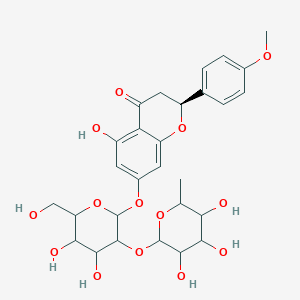
|
Poncirin |
Poncirin is a lipid of Polyketides (PK) class. |
53 |
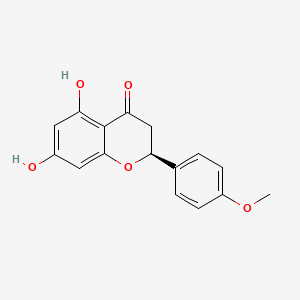
|
Isosakuranetin |
Isosakuranetin is a lipid of Polyketides (PK) class. |
49 |
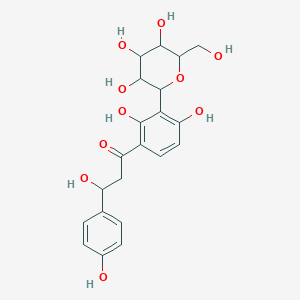
|
Pterosupin |
Pterosupin is a lipid of Polyketides (PK) class. |
8 |
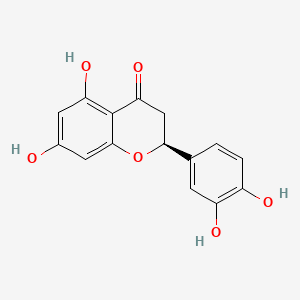
|
ERIODICTYOL |
Eriodictyol is a lipid of Polyketides (PK) class. Eriodictyol is associated with abnormalities such as Hyperostosis, Diffuse Idiopathic Skeletal, Macular degeneration, Consumption-archaic term for TB, Retinal Diseases and PARAGANGLIOMAS 4. The involved functions are known as glutathione biosynthetic process, Cytoprotection, Oxidants, protein expression and Cell Survival. Eriodictyol often locates in Cytoplasmic matrix, Protoplasm, Cytoplasmic, Cell Fraction and Back. The associated genes with Eriodictyol are NQO, HMOX1 gene, IMPACT gene, RPS6KA3 gene and GDNF gene. |
311 |
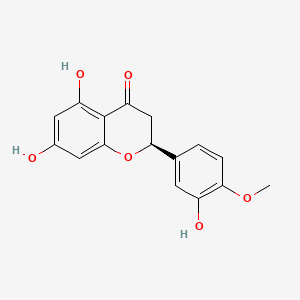
|
hesperetin |
Hesperetin is a lipid of Polyketides (PK) class. Hesperetin is associated with abnormalities such as Corn of toe, Ischemia, Osteoporosis, Consumption-archaic term for TB and Wiskott-Aldrich Syndrome. The involved functions are known as conjugation, inhibitors, Process, mRNA Expression and Adjudication. Hesperetin often locates in Entire intestinal epithelium, Protoplasm, Membrane, Shoulder and Back. The associated genes with Hesperetin are ABCG2 gene, ABCC2 gene, FATE1 gene, ABCB1 gene and P-glycoprotein 2. |
801 |
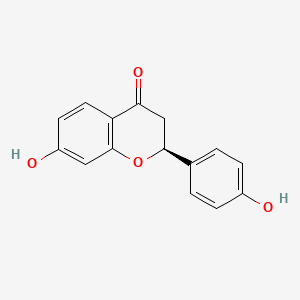
|
Liquiritigenin |
Liquiritigenin is a lipid of Polyketides (PK) class. Liquiritigenin is associated with abnormalities such as POSTMENOPAUSAL SYNDROME, Hyperostosis, Diffuse Idiopathic Skeletal, PARAGANGLIOMAS 2, Wiskott-Aldrich Syndrome and Alzheimer's Disease. The involved functions are known as Heterodimerization, Transcription, Genetic, Ligand Binding, Transcriptional Activation and Anabolism. Liquiritigenin often locates in Membrane, Blood, Microsomes, Liver, Microsomes and Body tissue. The associated genes with Liquiritigenin are Candidate Disease Gene, IMPACT gene, TNFSF10 gene, SLC33A1 gene and P4HTM gene. The related lipids are Lipopolysaccharides, pregnenolone sulfate and FuGene. The related experimental models are Xenograft Model. |
313 |









